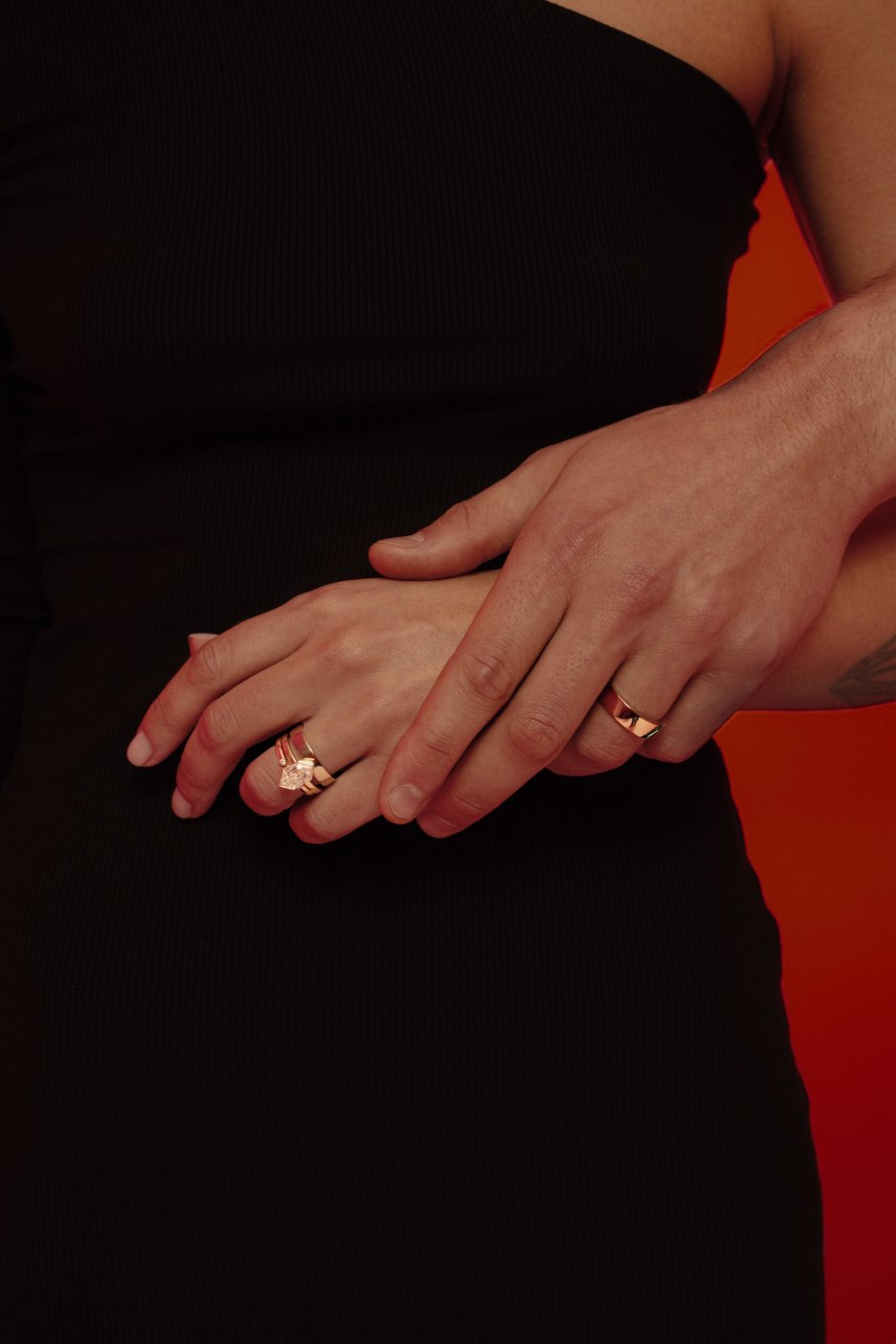The history behind Lab Grown Diamonds

Lab grown diamonds have become one of the biggest trends in sustainability in the fashion industry. And the technology used to manufacture them is advancing at a rapid pace. But where does this technology come from? And what is its history?
In spite of the fact that most of us consider lab grown diamonds in relation to the gem and the jewellery industry, scientists and product engineers are constantly searching for novel approaches to the production of diamonds that can be put to use in a variety of other industrial and medical settings. Imagine car paint that is infused with diamonds so that it doesn’t scratch or nanoclusters of diamonds that carry chemotherapy medications straight to the cells without the adverse effects of traditional delivery agents. These are just two examples of what the future may hold.
While most people are familiar with the High-Pressure, High-Temperature (HPHT) and Chemical Vapor Deposition (CVD) processes, which are the two most common methods for growing diamonds, researchers have been able to successfully find other ways to manufacture diamonds in the laboratory, and it is suggested that they will continue to do so.
Who came up with lab grown diamonds?
In 1797 it was discovered that diamonds are a pure form of carbon. Since then, scientists have been working on and predicting several methods to create diamonds from other forms of carbon that are more readily available. And in his short novel in 1911, H.G Wells published "The Diamond Maker," a science fiction (at the time) novel that discussed the possibility of creating lab grown diamonds.
But just a mere 30 or so years later, in 1941, General Electric put together a group of people to work out how to create diamonds in a lab. It was not all smooth sailing. Their work was temporarily halted due to the Second World War, but it was eventually picked up again. In December of 1954, Tracy Hall of GE claimed that the company had developed a method that could produce diamonds via a procedure that was both validated and reproducible. His invention was the use of a 'belt' press that was able to generate pressures more than 10 GPa and temperatures greater than 2000°C.
The press used a container in which graphite was dissolved in catalyst metals such as nickel, cobalt, and iron. These metals both dissolved the carbon and sped up the process of converting the raw carbon into a diamond. The biggest diamond he ever made had a diameter of 0.15 millimetres, making it unsuitable for use in jewellery but ideal for industrial applications.
Because of this approach, for the first time ever, lab grown diamonds could be produced in large quantities, and for many years after that, GE was the biggest participant in the development of industrial diamonds. As a result of this work, Hall was honoured with the Creative Innovation Award from the American Chemical Society.
When did lab grown diamonds become jewellery standard?
In 1971, General Electric succeeded for the first time in cultivating diamonds of gem quality by using natural diamonds as seeds in a method that is now known as high-pressure, high-temperature (HPHT), which is still the principal production technique used today. Stones with a diameter of 5 millimetres or more may be produced if the machines were used for up to a week (1 carat). Due to nitrogen contamination, the first stones of gem grade were usually yellow to brown in hue.
Inclusions were also widespread at this time, particularly with the introduction of nickel into the crystal structure. The production of colourless, so-called "white" stones was achieved by eliminating all of the nitrogen from the process and replacing it with either aluminium or titanium. The production of blue stones was accomplished by removing the nitrogen and replacing it with boron.
Because removing nitrogen from the procedure not only slowed down the crystallization process but also lowered the overall quality of the crystals, the technique was often carried out with some nitrogen present. Following decades of unrivalled success in the industry, General Electric (GE) decided to sell its super abrasives business to a private equity group in 2003.
Today, most lab grown diamonds are made through the chemical vapour process. This method requires the use of a vacuum chamber to be filled with carbon-containing gas, which then crystallizes on top of a synthetic diamond seed. In contrast to HPHT, this technology operates at lower temperatures and pressures.
The chemical vapour process was patented in the 1950s. But scientists spent another 30 years producing gem-quality diamonds. It took even longer for this process to be commercially viable.
Midway through the 1990s, manufacturers of lab grown diamonds started mass-producing bigger diamonds of gem quality, and this trend continues to this day, with the biggest challenge for producers is educating their customers about its sustainability and ethics.
Lab grown diamonds outside of jewellery
The price of lab grown diamonds has come down in the last 15 or so years especially as the lab technology has made it more efficient. The price of a lab grown diamond that weighs one carat is currently approximately 30-40% lower than the price of an equivalent mined diamond.
The use of lab grown diamonds however extends well beyond the realm of jewellery. Because diamonds are so hard (10 on the Mohs Scale), diamonds have recently been put to use in a broad range of different applications. Due to their extreme hardness, diamonds are the material of choice when it comes to cutting, grinding, and drilling other materials. Diamonds are also found on the tips and edges of cutting blades.
Since the gemstone qualities don’t really apply for these use-cases, these diamonds are typically not gemstone grade. In saying that, the demand for lab grown diamonds is growing as a result of the development of novel applications in the fields of cutting, drilling, optics, lasers, and electronics.
Materials that have a high thermal conductivity also often have a high electrical conductivity. In contrast, lab grown diamonds have a heat conductivity that is quite high but an electrical conductivity that is very low. Because of this, they are excellent candidates for use as heat sinks in electrical devices.
The rise of lab grown diamond applications is only starting to achieve its full potential. It is anticipated that this sector will continue to see exponential growth in the years to come as an increasing number of couples become aware that they can buy a quality diamond without having to be concerned about associating their engagement ring with damaged ecosystems or endangering lives.
Conclusion
Even though lab grown diamonds only make up a relatively small portion of the current diamond jewellery market, the demand for these stones continues to rise year after year. The fact that synthetic diamonds are 30–40 percent less expensive than natural diamonds, in addition to the rising interest among consumers in the ethical source of diamonds, makes lab grown diamonds an attractive alternative to mined diamonds.
Lab grown diamonds are particularly alluring to millennials and gen Z’ers, and this is not just due to their more affordable cost. These customers have a heightened awareness of the potential ethical and environmental issues that are brought about by diamond mining.






